
The First and Only Weekly Online Fanzine Devoted to the Life and Works of Edgar Rice Burroughs |
 |

The First and Only Weekly Online Fanzine Devoted to the Life and Works of Edgar Rice Burroughs |
 |
A NEW EXPLORATION OF
THE TARZAN SERIES
BY EDGAR RICE BURROUGHS
Tarzan and the Ant Men I
The following essay first appeared in ERB-APA #58, Summer 1998
in a slightly different form.
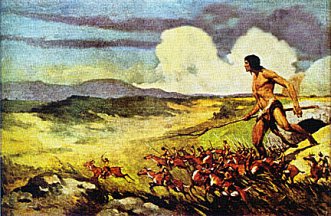
An Infantile Romance
by
David A. Adams
Reductio ad adsurdam
"What is it all but a trouble of ants in the gleam of a million million of suns?"
1923
Ed incorporates himself as Edgar Rice Burroughs, Inc. His secretary, John A. Shea accepts another position, but returns in 1924. Ed gives up the idea of success at farming and auctions off his livestock and equipment on Sept 27. Frank Shonfeld of Croydon, England, his most continuous correspondent, began writing to him.
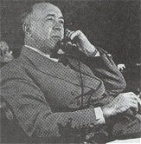

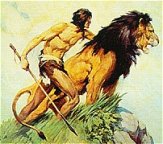
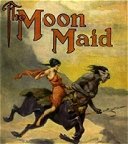
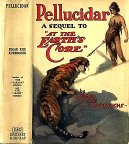
PUBLISHED:WRITTEN:Tarzan and the Golden Lion, McClurg. Moon Maid, The, McClurg. Pellucidar, McClurg. The Girl from Hollywood, Macaulay. The Bandit of Hell's Bend - (March-May 24) (suggested titles, "The Black Coyote" and "Diana of the Bar Y"). Tarzan and the Ant Men - (May-Nov) (Ed wrote about this effort, "I think this will be the last. They are not worth the effort I have to put on them now. I am coming pretty near to loathing it. . . . If I had not promised you this one I would chuck it right where it is."
1924
Ed plans to sell 120 acres of Tarzana ranch for a country club, (El Caballero Country Club) which later becomes a financial disaster. His luxurious Tarzana home was adopted as the golf course clubhouse, and he moved his family into town, renting a home at 544 South Gramercy Place, Los Angeles. Ed is near physical collapse from overexertion and anxiety.
PUBLISHED:
WRITTEN:Land That Time Forgot, McClurg. Tarzan and the Ant Men, McClurg.
- Marcia of the Doorstep - (April 12-October 13)
- "Out of Time's Abyss" (article for Urban Military Academy school newspaper)
The idea for Tarzan and the Ant Men came from Burroughs' publisher Ed read up on ants and their habits, and there is the obvious parallel with Swift's satire of the Lilliputians, but Gulliver's Travels is not the only place he was coming from in this Tarzan effort. Burroughs did not want to write another adventure for the ape-man, but one would not be able to tell from this finely-crafted story.
Lupoff finds Tarzan and the Ant Men to be full of riches. I was not particularly struck by it as a boy, but rereading it in my fifties aroused an enthusiasm for the story I had not found as a child of twelve. It did not take me long to get through the smooth, fast-moving tale, and I found many of those riches lying about mixed with a heady dose of complications. It contains the usual twisting of tales Burroughs is so fond of -- a specialty that he does to perfection despite the many threads he throws out for weaving together. Let me talk about the book awhile and see where the yarn may lead.
The first thread or passageway into the land across the great thorn forest concerns the fate of Esteban Miranda, who was left prisoner in the village of Obebe, the cannibal chief, in Tarzan and the Golden Lion. His is a parallel odyssey followed intermittently throughout the story -- a desperate man with Tarzan's bag of jewels and a kidnapped native girl-child. The Spaniard, Tarzan look-alike, alter ego is treated like a mad, brain damaged, River God whom Burroughs can spend his "Oh, no, not another Tarzan novel" spleen upon. The episodes with Esteban are not just superfluous inserts that stall the flow of the action. The climax of the story proves this point by allowing the false Tarzan to be mistaken by both Jane and Korak until the true Lord of the Jungle steps into the room. This is not just a denouement to the longer adventure in the domes of the ant men but the true climax to a story of Tarzan's and ERB's struggle with the hero's identity.
In a way, all of the Tarzan novels are studies in identity struggle. It begins with Tarzan of the Apes with an ape-child who is really a man-child, who is really Lord Greystoke, who is really the King of the Apes, and so on throughout the series where Tarzan loses his memory again and again, is mistaken for Esteban Miranda, becomes King of new ape tribes, etcetera, etcetera. The ape man tests his identity in a variety of strange lands and lost cities, all the while holding on to a basic Tarzan selfhood which makes the stories so appealing to his fans. In many ways, the Tarzan Series simply develops the basic themes we read about in our childhood fairy tales.
This time around Tarzan is known as Zuanthrol to the ant men, while he lies reduced to slavery their land, yet he is also known as a giant of the race of Zeralacolols. Burroughs had originally intended to include a glossary at the end of the novel, and it's unfortunate that he did not do so because the long names of the ant men are so evocative. In part, the long names are comic and perhaps are influenced, as Lupoff suggests, by Swift's satire on long-sounding names for little people. However, it seems likely that Burroughs had certain meanings of his own for the many names.
The story is divided into two parts. The first part concerns the "setting right" of the matriarchal society of the Alalus, while the second part is a great adventure romp, combined with the usual entangled love story, among the various tribes of the ant men. The land of the Alalus is primal. The strokes are painted large and loose like cave art with brutal, terrorizing women who treat men like nasty little boys - - dragging them around by the hair, dominating their lives until Tarzan teaches the son of the First Woman how to change the world through the use of the bow and arrow.
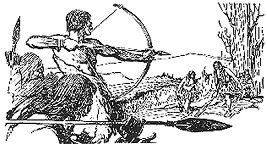
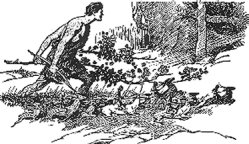
There is a lot of infantile fantasy projected in this novel. The themes of shrinking and expanding may be understood in Freudian terms, but they might also be read as a kind of Alice in Wonderland fantasy.This is basic, archtypal stuff. From a Jungian standpoint, the three women represent the Mother Goddess or the anima archetype. This type always comes in threes: see the three witches in Shakespeare, the three Marys in the Bible, and so on.
The First Woman is ape-like (as are they all) but she is presented in a great descriptive scene so that the reader expects her to be a typical Burroughsian man-ape. The fallen, unconscious Tarzan is taken back to his childhood by this Kala image, who is soon killed by the more powerful Third Woman, who is the sexually driven aspect of the erotic anima both the boy and Tarzan will overcome in the course of the tale. I'm afraid that the Second Woman is the image of Jane, the ineffective wife who is rapidly knocked out of the story when she tries to appropriate Tarzan, then killed when she persists at being foolish over a haunch of antelope. It's mythic stuff indeed, and powerfully told with sketched-in lines of raw strength and brutality.
As a lost city story, this one presents a thorny problem, a negative, sexual situation on the other side of a great thorn forest. The first part is crudely basic, as we have just seen, but part two which takes place in the ant domes is more subtle and harder to uncover. Here we twist and turn deeper and deeper into the limbic mind. We know this is true because we are dealing the insects, those creatures only evil sorcerers and dark shamen employ in their spells and incantations.
Janzara, the spoiled princess of Veltopismakus is a woman who gets straightened out by love after a brief, false infatuation for Tarzan. She is rather loosely drawn and might have become another difficult La, but Burroughs did not choose to take that course again.
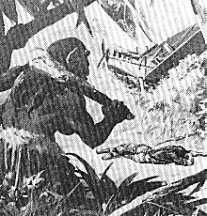
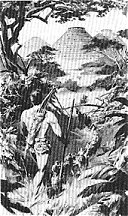
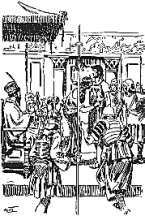
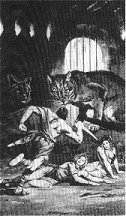
Talaskar, the slave girl is deeper in character since she is the one Tarzan and his side-kick, Komodoflorensal, rescue from the deep mines of the city domes. She is the source of the quest, so she is more noble in character and also a changling who can transform her face from old to young at will.With this heroine, Burroughs is dealing with a problematic situation. According the normal course of things in the romance-adventure novel, Talaskar should fall in love with the chief hero, Tarzan. Komodoflorensal thinks so too, but Tarzan already has a mate, so the side-kick gets the girl at the end. Tarzan is left at the curtain-crashing climax dealing with a amnesiac Esteban and a startled Jane who says, "John! . . . how could I have been mistaken?"
The personal secrets that lie in the minds of both Tarzan and Burroughs are yet to be uncovered. The adventure story scurries up and down the dark corridors of the city of ants lighted by candles that give off oxygen instead of consuming it. The evil genius of the wizard, Zoanthrohago, reduces Tarzan to pygmy size through the use of an experimental, biological, sub-atomic particle, disc machine - - shades of the master mind of Mars. Secrets of the mind. Dark secrets indeed.
We can easily see that Burroughs was helping to create a new literary form, science fiction, as well as telling a Gothic romance. And this novel is Gothic. Here are the sliding panels, the descent into the abyss on iron hooks, the mystery of the chained bones of men in dark tunnels of death. Deep dust, the dust of ages.
And throughout this marvelous tapestry travels the locket first seen in Tarzan of the Apes, the locket with the picture of his father and mother. Taken from his unconscious body by the boy of the First Woman, who is killed, then carried by Ska, the vulture, to the horns of the dead buffalo bull. It is a minor symbolic odyssey of ordeals in a novel of ordeals: the ordeal of the son of the First Woman, the ordeal of Tarzan's quest for home, the ordeal of the sad little girl in the hands of evil Esteban Miranda, the false Tarzan.
In many ways Tarzan and the Ant Men is a dark novel. It seems most unfair that little Uhha, the heroine of episode one, chapter one, should be devoured by Numa after her heroic journey with Esteban. She most of all represents the death of innocence -- cast away in the middle of a jungle of a story, left to the mercy of savage beasts. But it is a cruel novel with cruel overtones of brutal masculinity.
The son of the First Woman shows Tarzan how he has changed his society by striking the face of his woman with his fists, only to have her clutch at his legs in fawning servility. It's not a pretty sight.
Tarzan twists off the head of an ant man, Caraftap, like an ant, but it was a man who was attempting to rape the woman he was intent upon rescuing, so we quickly forgive the deed. He throws the corpse aside without further comment.
Tarzan tells Komodoflorensal to run his sword through Kalfastoban, and we calmly observe the blade coming out of the heart. There is carnage in his wake. Burroughs is angry at more than income tax (which he decries in an earlier chapter). He is bashing around in an ant hill of miseries, and if we only see the adventure and derring-do we are reading as children ourselves. Nothing is really resolved in Tarzan and the Ant Men. All the old cruelties remain under new guises. The son of the First Woman now terrorizes the women who terrorized him. He is the classic abuser who will propagate a family of abusers.
The cities of the ants will continue to make war upon each other. Military maneuvers leading to more military deaths. Burroughs hated the carnage of the First World War, yet he stood excited upon the beaches at Pearl Harbor during the bombing, finally at the right place at the right time to see some real action. It was history in the making on a large scale, and undoubtedly appealed to his sense of adventure and heroism.
Burroughs did not create a superman with his Tarzan. The character is filled with human limitations, and this is one of the reasons we love him so much. Indeed, the wizard, Zoanthrohago, might be considered to be criticism of Nietzsche's Zaratustra. Nor was there any love for super races in Burroughs' worlds; yet a sincere patriotism always plays its part. Both bad politics and false religion are frequently lambasted in his works. I sometimes become upset when I see the works of Burroughs drawn and quartered or run through the cruel mills of modern literary criticism where the unsuspecting author turns out to be a warmonger, a racist or a misogynist. Later, after a little thought, I realize that such reappraisement of writers is inevitable, and in some ways it is better than abject neglect. Unfortunately, much literary criticism has faded today into a new darkness -- a sort of textural cannibalism that deconstructs living words and cooks them in the stew pot of political correctness.
Pick up Tarzan and the Ant Men if you have not done so in awhile. As you crawl through the dark passages, you may find you are creeping ant-like through some of the hidden passages of your own secret heart.
If this is too much for comfort, just crawl under a warm blanket and enjoy the rollicking adventure. There is nothing wrong with riding a miniature antelope. Sometimes getting small is just getting young again.
Written, July 12, 1995
Revised, June /July 1998

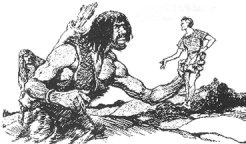

Visit
David "Nkima" Adams' ERBzine homepage
ERBzine
0396
to see the navigation chart of all of his
Chattering From the Shoulder columns
and other appearances in the Hillman ERB Cosmos
![]()
![]()
Volume
0795

BILL
HILLMAN
Visit
our thousands of other sites at:
BILL
AND SUE-ON HILLMAN ECLECTIC STUDIO
All
ERB Images© and Tarzan® are Copyright ERB, Inc.- All Rights Reserved.
All
Original Work © 1996-2002/2010 by Bill Hillman and/or Contributing
Authors/Owners
Chattering
from the Shoulder is a Copyrighted feature by David Adams